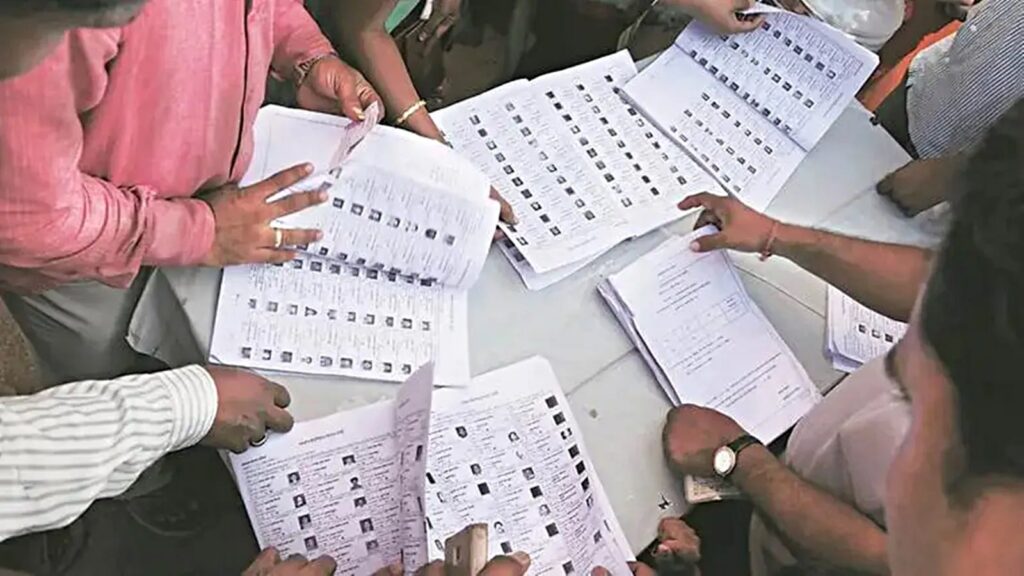An analysis of the final Bihar electoral rolls published on Tuesday, after the conclusion of the Election Commission’s Special Intensive Revision (SIR) drive, shows that each of its 38 districts saw their total number of voters decline, with Gopalganj, Kishanganj and Purnia leading the pack.
Another common thread across the districts is that between the first draft published as part of the SIR drive on August 1, and the final rolls on Tuesday, the number of voters rose, if marginally. District-level data on the final rolls was provided by district election officials.
The biggest overall decreases were seen in the Bihar districts bordering Nepal, including those with a high concentration of Muslims. In contrast, Patna, Bihar’s most populous district, saw among the lowest declines in its electorate, at 4.59%.
As per sources, hardly any deletions in the draft rolls were on account of failure to prove citizenship, raising a question mark over the EC’s claim that one of the main reasons for the surprise SIR drive was weeding out “illegal immigrants”.
In Gopalganj, from 20.56 lakh voters on June 24 (before the SIR began), the number of voters fell by 15.1% to 17.46 lakh in the August 1 draft rolls, before rising by 3.49% to 18.07 lakh in the final rolls. Overall, Gopalganj’s electorate fell by 12.13% over the course of the SIR, the biggest such decline. Gopalganj also has a sizeable Muslim population, at 17.02%.
 Top and bottom five districts for change in electorate.
Top and bottom five districts for change in electorate.
After Gopalganj, Kishanganj and Purnia saw the biggest declines in their electorates at 9.69% and 8.41%, respectively. Both Kishanganj and Purnia fall in the Seemanchal region along the border with West Bengal, and have among the highest concentrations of Muslims in the state.
With a 67.98% Muslim population, as per the 2011 Census, Kishanganj is the only Muslim-majority district in Bihar. Purnia has the fourth highest share of Muslims in its population, in the state, at 38.46%. In Katihar and Araria, the two other districts under Seemanchal, the electorate shrank by 7.12% and 5.55%, respectively. While Katihar’s Muslim population stands at approximately 44.47%, Araria’s is at 42.95%.
Notably, Kishanganj and Araria also share borders with Nepal, as do five other districts – Madhubani, East Champaran, Sitamarhi, Supaul and West Champaran. Each of these districts saw their electorates fall by more than 5%.
Among the other districts with at least 15% Muslim population, Madhubani (18.25% Muslims), Bhagalpur (17.68%) and East Champaran (19.42%) saw their electorates drop by between 7% and 8%. The remaining seven districts with 15%-plus Muslim populations saw their electorates fall by between 4% and 7%.
Only 10 districts saw their electorates fall by less than 5%. While Patna is an exception among them given its high population, six of these 10 districts are among the state’s smallest in terms of population.
East Champaran, the second-most populous district after Patna, saw its voter numbers fall by 7.08%, while other heavily populated districts like Madhubani and Muzaffarpur saw their electorates dip by 7.9% and 5.59%, respectively.
As for additions between the August 1 draft rolls and the September 30 final rolls, Purnia topped, with a rise of 4.16%. The lowest increase in this period, where claims and objections could be filed, was in Katihar, at 1.24%.
In terms of absolute number of voters, Patna saw the highest increase, at 1.64 lakh or 3.52%, followed by other heavily populated districts such as Muzaffarpur (88,108 or 2.75%) and Madhubani (85,645 or 2.83%).
Over the course of the SIR, as many as 68.6 lakh names were struck off, of which 65 lakh were removed when the draft roll was published on August 1, and another 3.66 lakh during the claims and objections stage. Alongside, 21.53 lakh new electors were also added.
Of the 65 lakh names deleted at the draft stage, 22 lakh were marked dead, 36 lakh were shown as permanently migrated or absent, and 7 lakh were already enrolled elsewhere. In the final roll, the sources said that of the 3.66 lakh further deletions, over 2 lakh were due to migration, around 60,000 to death, and 80,000 to duplication (enrolled in two places).

